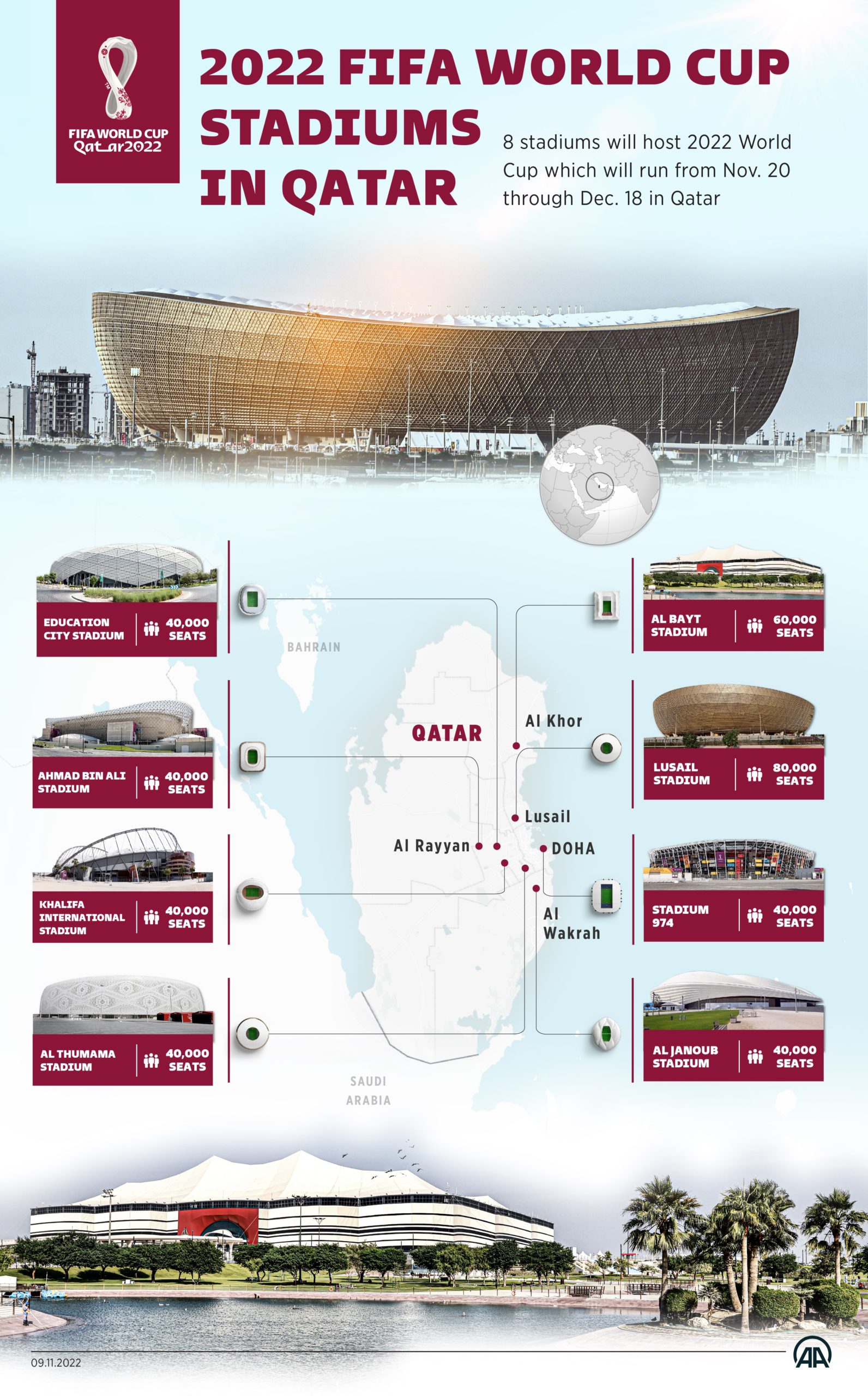When it was announced Qatar would host the 2022 World Cup, there was talk about whether matches would be played in indoor stadiums as well as questions about artificial pitches.
The intense summer heat made this a plausible move, but FIFA confirmed in 2015 that the tournament would take place during the northern hemisphere’s winter.
Hosts Qatar will begin the tournament on November 20 against Ecuador, with the final on December 18.
ARE THERE INDOOR STADIUMS IN QATAR? WILL MATCHES BE PLAYED INSIDE AT THE WORLD CUP?
Technically, no. However, the Al Bayt Stadium is covered by a tent-like structure. The stadium derives its name from ‘bayt al sha’ar’, the tents historically used by the nomadic peoples of the region.
The opening match of the tournament between Qatar and Ecuador will take place at the Al Bayt Stadium as well as the Netherlands v Qatar on November 29.
England’s highly-anticipated match with the United States on November 25 will be at the Al Bayt, plus Spain v Germany on November 27 and the second semi-final of the World Cup on December 14.
THE WORLD CUP STADIUMS
Al Bayt Stadium
Khalifa International Stadium
Al Thumama Stadium
Ahmad Bin Ali Stadium
Lusail Stadium
Stadium 974
Education City Stadium
Al Janoub Stadium

DO THE STADIUMS HAVE AIR CONDITIONING AT THE WORLD CUP?
Air conditioning has been installed at every stadium with the use of solar energy.
With the tournament taking place in the winter, air conditioning may not even be required in the evening games when temperatures drop to around 21-24 degrees Celsius.
“We are not just cooling the air, we’re cleaning it,” professor of mechanical engineering at Qatar University Dr Saud Abdulaziz Abdul Ghani told FIFA.com.
“We’re purifying the air for spectators. For example, people who have allergies won’t have problems inside our stadiums as we have the cleanest and purest air there is.
“Pre-cooled air comes in through grills built into the stands and large nozzles alongside the pitch.
“Using the air circulation technique, cooled air is then drawn back, re-cooled, filtered and pushed out where it is needed.”
QATAR WORLD CUP STADIUM CAPACITY
The final of the Qatar World Cup will take place at the Lusail Iconic Stadium which has a capacity of 80,000.
The next biggest stadium is the Al Bayt Stadium which can hold 60,000 people.
Al Rayyan will have three stadiums – the Khalifa International Stadium which has a capacity of 45,426, the Education City Stadium (45,350) and the Ahmad bin Ali Stadium (44,740).
Doha has two stadiums with a capacity of 40,000 – the Stadium 974 and the Al Thumama Stadium. Al Janoub has the same capacity.
| Stadium | Where | Capacity |
| Lusail Iconic Stadium | Lusail | 80,000 |
| Al Bayt Stadium | Al Khor | 60,000 |
| Khalifa International Stadium | Al Rayyan | 45,416 |
| Education City Stadium | Al Rayyan | 45,350 |
| Ahmad bin Ali Stadium | Al Rayyan | 44,740 |
| Stadium 974 | Doha | 40,000 |
| Al Thumama Stadium | Doha | 40,000 |
| Al Janoub Stadium | Al Wakrah | 40,000 |
ARE THE FOOTBALL PITCHES ARTIFICIAL IN QATAR?
In short, no. The pitches at the World Cup will not be artificial with Qatar using American grass which is set to withstand the multitude of matches in the 28-day period during the tournament.
The American grass seed has been developed by a Georgia-based company.
“The American grass seed gives you a more robust playing surface,” David Graham from Aspire Turf, which is responsible for the Qatar 2022 pitches, told ESPN.
“With the climate and conditions in Qatar, the playing surface wouldn’t hold together without the right grass seed.”













